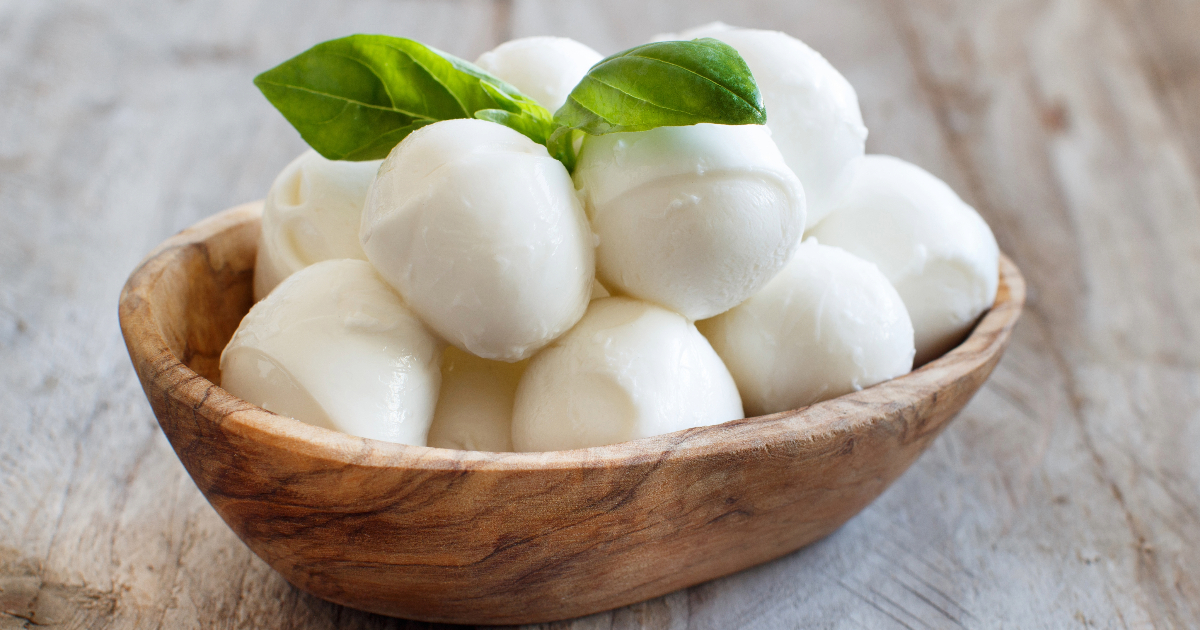Asadero and mozzarella are both renowned for their incredible melting properties and versatility, securing their place in dishes across cuisines worldwide.

However, their unique origins and production methods have key distinctions that cheese connoisseurs appreciate.
A Profile of Asadero Cheese
With its smooth texture and mild flavor, asadero cheese is a star ingredient in Mexican cuisine. Hailing from the northern states of Mexico, it's a semi-soft white cheese traditionally made from cow's milk.
Key identifying traits of asadero include:
- Pale yellow color, often braided or pressed into rounds
- Semi-soft, smooth, creamy texture
- Mild, slightly tangy taste with a buttery finish
- Melts beautifully into a stretchy consistency
- Short aging period resulting in a fresh flavor
- High protein and calcium content but also high in fat and calories
Beyond its excellent melting abilities, asadero is prized for its adaptability. Its mild profile allows it to complement without overpowering. Traditional uses in Mexican cooking include quesadillas, nachos, chiles rellenos, and queso fundido.
However, creative cooks worldwide also incorporate asadero into pizzas, pastas, sandwiches, dips, and more. Its smooth mouthfeel and subtle kick make it an easy crowd-pleaser!
The Origins of Mozzarella Cheese
Hailing from Italy, mozzarella is one of the most recognized and consumed cheeses globally. Traditional mozzarella is made from the milk of Italian water buffaloes, resulting in a delicate, milky flavor and trademark stretchiness.
However, most modern mozzarella is made from cow's milk for wider availability. The characteristics that define mozzarella include:
- White color and smooth, pliable appearance
- Soft, elastic texture with a stringy pull
- Mild, milky taste sometimes described as slightly tangy
- Melts beautifully, especially when heated in water or whey
- Higher moisture content than most cheeses
- Lower fat than many other soft cheeses
- Excellent source of protein and calcium
Beyond pizza, mozzarella shines in pastas, paninis, salads, and more. Its subtle flavor profile allows other ingredients to take the spotlight while its satisfying melt provides the perfect binding quality.
Fresh mozzarella best showcases the cheese's delicate flavor and texture. However, smoked or low-moisture mozzarella offer tasty alternatives with their own unique attributes.
Comparing Textures: Smooth and Stringy
Texture is a key distinction between asadero and mozzarella.
Asadero has a semi-soft, smooth consistency with a creamy mouthfeel. Its pliable texture becomes even silkier and more cohesive when melted.
Mozzarella is most prized for its unique stringy, elastic texture that creates satisfying strands when pulled apart. It becomes pleasantly gooey and stretchy when melted but maintains more structure than asadero.
These textural differences stem from their distinct production methods:
- Asadero achieves its smoothness through kneading and stretching the curds after heating. This alignment of proteins gives it a cohesive quality.
- Mozzarella gets its strings through a process called pasta filata where the curds are stretched and folded into long fibers. This retains more tension and shape when melted.
While both cheeses melt gracefully, their differing textures lend unique qualities in cooking. Asadero provides ultimate creaminess, while mozzarella gives pleasing structure and pulls.
Comparing Flavors: Mild vs. Milky
In addition to texture, asadero and mozzarella differ subtly in flavor.
Asadero has a mild, fresh taste with slight tang and buttery notes. Its flavor profile is understated, providing a blank canvas for other ingredients.
Mozzarella imparts a milky, delicate flavor due to its higher moisture content. Traditional buffalo milk versions have a particularly nuanced sweetness and grassy finish. The flavor is clean and subtle.
Factors impacting their tastes:
- Milk source - Cow vs. buffalo milk affects sweetness and tang
- Aging - Asadero's short aging heightens freshness versus mozzarella's direct consumption
- Moisture - Mozzarella has a high moisture content that enhances milky notes
- Herbs/spices - Some mozzarella incorporates basil, garlic, or peppers
While their flavor differences are subtle, asadero offers a fresh kick compared to mozzarella's rounded milky notes. Both let other ingredients shine while providing a creamy, satisfying backbone.
Melting Capabilities: Gooey Goodness
Arguably the most prized attribute of both asadero and mozzarella is their incredible melting ability.
When exposed to heat, asadero becomes lusciously gooey and stringy. Its smooth texture and cohesiveness create an ultralicious melted consistency.
Likewise, mozzarella melts into a stretchy, malleable texture that provides the satisfying strands in each bite. Its pliable strings soften but hold their shape when melted for excellent binding.
Factors impacting their meltability:
- Protein structure - Developed through kneading/stretching of curds impacts how the cheeses melt.
- Fat content - Higher fat results in creamier melted cheese versus a stringier consistency.
- Moisture levels - Higher moisture, as in fresh mozzarella, creates an oozier melted texture.
- Cooking method - Dry heat vs. melting in liquid impacts meltiness.
Both asadero and mozzarella offer glorious gooey, stringy textures when cooked. Their world-class melting capabilities make them pizza pedigree.
Usage in Cooking: Quesadillas to Risottos
The melty excellence of asadero and mozzarella make them universally adaptable in recipes from breakfast through dessert.
Asadero provides a smooth, creamy melt that shines in:
- Quesadillas, enchiladas, and queso fundido
- Omelets, breakfast sandwiches, and tacos
- Flatbreads, nachos, taquitos, and quesadillas
- Grilled cheese, burgers, pizza, pasta bakes
Mozzarella imparts satisfying strings and structure ideal for:
- Pizza, calzones, breadsticks
- Caprese salad, panzanella salad, Greek salad
- Pasta, risottos, ravioli, pesto dishes
- Soups, lasagnas, bakes, sandwiches
- Cheese boards, charcuterie platters
Their shared meltability means they often substitute for one another. But to optimize for flavor and texture, use asadero where creaminess is key and mozzarella where strings are desired.
Nutrition Profile: Protein and Fat
Nutritionally, asadero and mozzarella share similarities but also have key differences.
Asadero is:
- High in protein and calcium - benefits bones, muscles, nerves
- High in fat and calories - satisfies hunger but eat in moderation
- Low carb - 1g net carbs per ounce
Mozzarella is:
- Excellent source of protein - builds and repairs muscles
- Rich in calcium - for bone health
- Lower in fat than many cheeses - depends on style
- Low carb - 1-2g net carbs per ounce
Factors impacting nutritional values:
- Milk source - Cow vs. buffalo milk affects fat and protein content
- Moisture content - Higher moisture means less fat
- Aging - Longer aging increases fats and lowers carbohydrates
- Part-skim vs. whole milk - Using skim milk reduces overall fat
While both offer protein and calcium, mozzarella's lower fat content gives it a slight edge for regular snacking or cooking.
The Making of Asadero and Mozzarella
Examining how asadero and mozzarella are produced provides further insight into their distinct identities.
Asadero owes its origins to cheesemaking traditions brought to Mexico by Franciscan monks in the 16th century. Today's processes remain artisanal:
- Raw cow's milk - highest quality for flavor and texture
- Vegetable or animal rennet - curdles the milk
- Cutting the curds - expels whey, results in crumbles
- Heating and kneading - gives asadero its signature smoothness
- Molding and aging - pressed into rounds, aged briefly
Mozzarella as we know it traces back to the 12th century near Naples, Italy:
- Buffalo or cow milk - impacts flavor and fat content
- Rennet added - curdles milk in first step
- Curds cut and heated - expels whey
- Curds mixed and stretched - gives mozzarella its strings
- Formed into balls - typically enjoyed fresh
Their shared heritage of ancient cheesemaking techniques is evident but the local cultures impart key differences.
Comparing Similar Cheeses
With their melting mastery, asadero and mozzarella are often likened to other cheeses:
Asadero is sometimes compared to:
- Oaxaca - Similar production but more tangy
- Monterey Jack - Comparable melting with bolder flavor
- Young Provolone - Mild taste and meltability
Mozzarella finds parallels with:
- Provolone - Stretchy Italian relative when young
- Burrata - Cream-filled mozzarella pouch
- Fior di Latte - Made from cow's vs. buffalo milk
But despite these similarities, the unique practices of each cheesemaker impart an identity all their own.
The Melting: Asadero and Mozzarella
Asadero and mozzarella share remarkable melting qualities that make them universally loved. But they differ in:
- Texture - Asadero's smoothness vs. mozzarella's strings
- Flavor - Mild freshness vs. milky and delicate
- Usage - Creamy melt vs. stretchy binding
- Nutrition - Lower fat of mozzarella vs. higher of asadero
- Production - Local artisans impart uniqueness
Their versatility and similarity means they sometimes stand in for one another. But to appreciate their nuances, use asadero where creaminess enhances a dish and mozzarella where elasticity is desired.
Understanding the strengths of each cheese allows you to optimize recipes and delight foodies with these melted masters. Savor the pleasures that only asadero and mozzarella can impart!
FAQs
Is asadero cheese just like mozzarella?
While asadero and mozzarella share incredible melting properties, they differ in taste and texture. Asadero has a smooth, creamy consistency versus mozzarella's stringy, elastic texture. The flavor of asadero is mild and fresh compared to mozzarella's delicate, milky taste.
Can you substitute asadero for mozzarella?
Yes, asadero and mozzarella can generally substitute for one another thanks to their excellent melting abilities. However, for best results consider the differences in texture and flavor. Use mozzarella when you want more pronounced strings in melted dishes like pizza or lasagna. Choose asadero for ultimate creaminess in quesadillas or dips.
Is it easy to make asadero and mozzarella at home?
While homemade cheeses require some specialty ingredients and techniques, it is quite achievable to make both asadero and mozzarella at home. Their simplicity compared to aged cheeses makes them an approachable starting point. Look for recipes that provide tips for achieving the signature textures of each cheese. With practice, you can handcraft these remarkable melting cheeses.
What is a good cheese pairing with asadero?
The mild freshness of asadero pairs well with cheeses like cotija, queso fresco, and goat cheeses. Aged cheeses like parmesan or dry jack offer nice contrast. Pairing with charcuterie, nuts, fruits, and jams also makes a delightful cheese board.
What wine goes well with mozzarella?
Fresh mozzarella complements delicate white wines like Pinot Grigio or unoaked Chardonnay. Aged mozzarella pairs nicely with Chianti or Sangiovese wines. Sparkling wines also make a refreshing match with mozzarella's creamy texture. Experiment to find your perfect mozzarella and wine pairing.
Conclusion
Asadero and mozzarella are both famous for melting smoothly, but they have some key differences.
Asadero melts into a soft, creamy texture that is great for quesadillas and dips.
Mozzarella melts into stretchy strings that are perfect on pizza and in pasta.
While they can substitute for each other, using the right cheese gives the best texture and flavor. Understanding the unique origins and qualities of asadero and mozzarella allows you to pick the perfect melted cheese for any dish.

